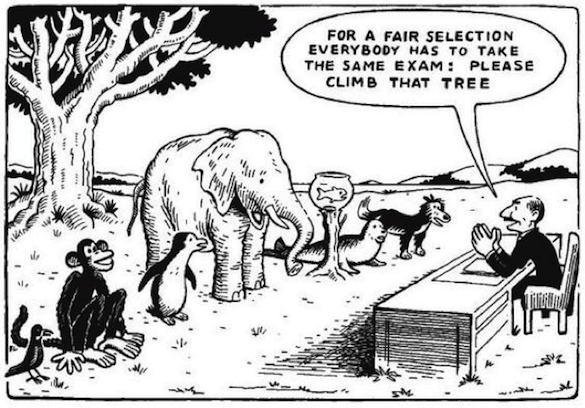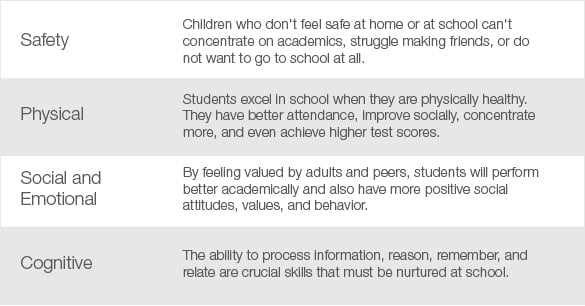5 Ways to Stand for Greatness in Education
Author: Leader in Me
October 15, 2015

https://www.youtube.com/watch?v=wfTRLhX011Y&list=PL6kCQxjpOOz6XpWqU8Z8-niSv24LFSCvQ
Many educators around the world are enabling students to achieve their full potential. Regardless of their circumstances, these innovative educators continue to blaze a trail through common challenges in education. They seem to have a natural ability to make a lasting impact within their role and in the lives they touch.
What is the secret?
These administrators and teachers stand for greatness. They possess a unique, personal vision for the great work they do. In fact, they love what they do. Their perspective is not simply limited to “the now” (i.e., current assignments, projects, or exams), but rather focuses on the future for their students and for themselves.
“That is the difference between good teachers and great teachers: good teachers make the best of a pupil’s means; great teachers foresee a pupil’s ends.” —Maria Callas
Here are five ways you can stand for greatness in education:
1. Stand for leadership.
“Not the cry, but the flight of a wild duck, leads the flock to fly and follow.” —Chinese Proverb
Empowering students to take flight and excel by choice is an incredibly important perspective that will transcend classroom learning. As students proactively choose to be leaders, many behavioral, academic, and social/emotional challenges can be resolved. The principle of leadership can become contagious within a classroom or school culture, as each individual grasps this timeless truth: I can lead my own life and inspire those around me to be leaders too.

2. Stand for student potential.
Consider for a moment: What if all educators believed each child had unique gifts, talents, and abilities, and their task was to help children discover their individual genius in order to reach their potential?
Too often schools establish barriers, comparisons, and limitations that skew a student’s understanding of his or her own ability. The focus remains too much on the traditional definition of academic genius, instead of recognizing all genius.
Thomas Armstrong, Ph.D., identified in his book, Awakening Genius in the Classroom, 12 qualities of genius that are not commonly considered at school:
Curiosity, Playfulness, Imagination, Creativity, Wonder, Wisdom, Inventiveness, Vitality, Sensitivity, Flexibility, Humor, Joy.
How can we ensure that these qualities are valued and nurtured in the classroom and at home amid academics? How do we reach the students who struggle academically or in other ways to realize their unique gifts, talents, and abilities?
3. Stand for change.
Change in anything always starts with you. Teaching this principle to your students will encourage them become more independent and responsible in their academics and in other aspects of life. Whether they face difficult challenges at home or in school, they will recognize they always have a choice. Internalizing this principle yourself also helps you realize that you can make a difference and change things around you.
4. Stand for academic excellence.
Children are naturally curious and quite brilliant. If leveraged in the right way, curiosity can be a powerful tool for retaining academic information learned at school. So how do you unleash curiosity, creativity, and exploration?
“The art of teaching is the art of assisting discovery.” —Mark Van Doren
The purpose of self-directed learning is to enable students to take initiative in their learning with or without others. Students select, manage, and diagnose their own learning needs through exploration combined with teacher guidance, which leads to better motivation and academic performance.
5. Stand for each student.
Academics are certainly a primary reason for attending school. However, a whole-child approach to education can make a significant difference. In many cases, an improvement in academics can be achieved by simply addressing other pressing needs in a child’s life. By learning to identify differing dimensions of students, educators can help them overcome barriers that impede the learning process.
In 1943, Abraham Maslow stated that people were motivated to achieve certain needs, and organized a pyramid called “Maslow’s Hierarchy of Needs.” A person must satisfy lower-level, basic needs before progressing on to meet higher-level needs.
Helping students meet their basic needs will help them succeed in school and in life:
It may seem intimidating to stand for something or do something different, but if you voice your thoughts on how to make a difference in your school and in the lives of your students,
“You must be the change you wish to see in the world.” —Mahatma Gandhi
Share Article on
Tags: principals, student empowerment, teachers, The Leader in Me, the Leader in Me Symposium


